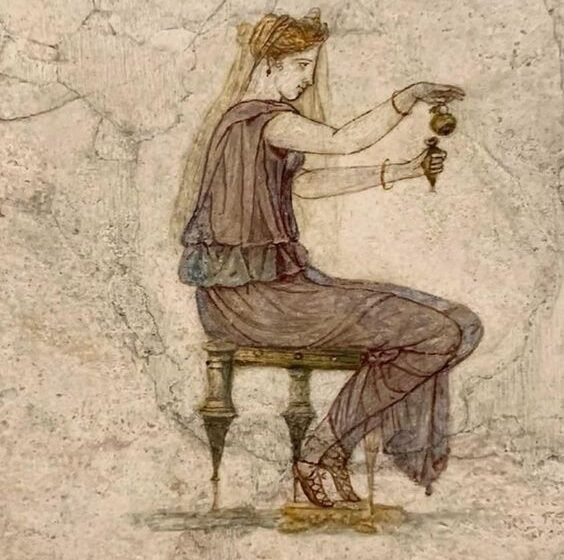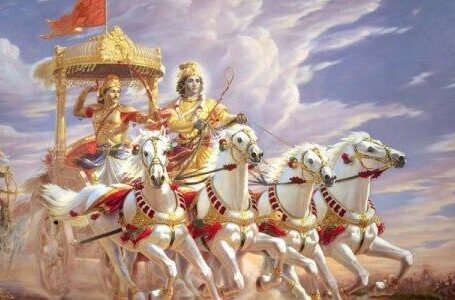Fragrant Legacies: Uncovering the Ancient Art of Perfumery

Perfumery, an art as old as civilization itself, has woven an intricate tapestry of cultural, religious, and medicinal significance across the tides of time. From the sun-drenched plains of ancient Mesopotamia to the enigmatic temples of Egypt and the bustling streets of the Indus Valley Civilization, the story of perfumery unfolds as a captivating journey through the senses, offering a window into the soul of humanity’s past.

This exploration embarks on a fragrant odyssey, tracing the origins, practices, and legacies of perfumery across three of the most influential civilizations of antiquity: Mesopotamia, Egypt, and the Indus Valley. Through the lens of archaeology, historical texts, and cultural artifacts, we unravel the secrets of ancient perfumers, whose artistry and ingenuity continue to shape our olfactory landscape and enrich our understanding of human history.
This blog navigates the scented pathways of the ancient world, where the essence of perfume goes beyond physical adornment and becomes a vessel for spirituality, a symbol of status and wealth, and a conduit for artistic expression. In this fragrant tapestry, discover not only the craftsmanship and ingenuity of ancient artisans but also the enduring power of scent to evoke memories, stir emotions, and forge connections across time and space. Welcome to a world where fragrance becomes a gateway to the past, inviting us to explore the hidden depths of our shared human heritage and celebrate the timeless allure of perfumery as an art form that has stood the test of time.

Perfumery has existed from the advent of civilization itself, it can be considered a long time companion to human history. The origins of perfumery stretch into antiquity, beyond any individual chemist or perfumer. Evidence reveals the practice of perfumery dates back to around 4000 BCE in the fertile crescent of Mesopotamia. Popularly known as the cradle of civilization, Mesopotamia was not only a hub of innovation in writing, agriculture, and governance but also a land where fragrance held significant cultural and religious importance. Perfumery in Mesopotamia wasn’t merely about enhancing personal aroma but also about spiritual rituals, medicinal practices, and social status. This quality of perfumery to transcend borders within societal spheres is seen not only in Mesopotamia but also in the other two civilizations this blog will explore. Archaeological excavations in Cyprus have unearthed ancient vessels containing some of the oldest perfumes known to humanity, hinting at the early human fascination with fragrance and its transformative power.

Mesopotamian perfumery flourished alongside the rise of early civilizations like Sumer, Akkad, and Babylon. The region’s fertile lands nurtured a variety of aromatic plants, including myrrh, frankincense, cedarwood, and cypress, which became essential ingredients in perfumery.
Perfumes played a pivotal role in Mesopotamian rituals and religious ceremonies. They were believed to bridge the gap between the earthly realm and the divine. Temples were steeped in scented oils and incense to create an ambiance conducive to prayer and meditation. Fragrant offerings were made to appease gods and goddesses; individual deities were also associated with specific scents.
In addition to their spiritual significance, fragrances were also valued for their medicinal properties. Mesopotamian healers concocted aromatic potions and ointments using ingredients like myrrh, which was prized for its antibacterial and anti-inflammatory properties. These fragrant remedies were used to treat various ailments, ranging from skin conditions to respiratory problems.

Perfumes were not just reserved for religious or medicinal purposes but also served as symbols of wealth and status. The elite class indulged in luxurious fragrances made from rare and exotic ingredients imported from distant lands. Scented oils were often gifted as tokens of appreciation or exchanged as diplomatic gestures, reflecting the sophistication and refinement of Mesopotamian society.
Tapputi, also known by the honorific Tapputi-Belatekallim, is the first significant figure in the origin of perfumery in civilization; her legacy is enshrined in the ancient cuneiform tablets of Babylonian Mesopotamia. This pioneering figure was a woman of remarkable skill and innovation whose mastery of scent-extraction techniques around 1200 BCE earned her the distinguished title of the world’s first recorded chemist. Tapputi’s methods were groundbreaking, including her ingenious use of solvents which revolutionized the craft of perfume making. Her ingenuity and importance in Mesopotamian history and society elevated her to a position of prominence as the overseer of the Mesopotamian Royal Palace. Through her meticulous documentation of scent extraction techniques, Tapputi ensured the transmission of her knowledge to future generations. She laid a foundation upon which the perfumers of the ancient world would build.

Skilled artisans, known as “kurkullu,” meticulously crafted perfumes using age-old techniques passed down through generations, following the path of ancient perfumers like Tapputi. These craftsmen experimented with different combinations of natural ingredients, extracting essences through methods like distillation and maceration. The resulting perfumes were highly sought after, not only in Mesopotamia but also in neighboring civilizations, leading to a thriving trade network.
Mesopotamian perfumery offers a fascinating glimpse into the intersection of art, spirituality, and commerce in ancient times. From sacred rituals to opulent indulgence, fragrances existed in every aspect of Mesopotamian society, leaving an indelible mark on human history and culture. The legacy of Mesopotamian perfumery endures through history, influencing subsequent civilizations and shaping the evolution of fragrance worldwide. The aromatic traditions and practices passed down by Mesopotamian artisans laid the groundwork for the perfumery industry as we know it today, underscoring the enduring allure of scent in human culture.
The allure of perfumes transcended borders and found fertile ground in the land of ancient Egypt, where fragrances held sway over both the mortal and the divine. The ancient Egyptians, renowned for their profound reverence for the gods, related perfumery with spiritual significance, much like the people of Mesopotamia. They utilized natural ingredients such as myrrh, frankincense, and aromatic plants to craft their fragrant elixirs. Perfumes became an integral part of religious ceremonies, symbolizing offerings to the deities and serving as conduits between the earthly realm and the divine.

At the heart of Egyptian perfumery lay Kyphi, a sacred incense blend of unparalleled complexity and significance. Kyphi was crafted from a symphony of imported resins, honey, spices, and wine; it was meticulously prepared over months, infused with magical formulas and incantations to sanctify its essence. The burning of Kyphi not only sanctified the transition from day to night but also served as a potent invocation of the divine, bridging the gap between mortals and gods in sacred rituals and ceremonies.
In the pantheon of Egyptian deities, fragrance found its divine counterparts in gods such as Chesmou, Merehet, and Nefertum, patrons of perfume production and the lotus blossom. The ancient Egyptians revered resins such as myrrh and frankincense as the tears and sweat of the gods, elevating them to sacred offerings during their religious rituals and ceremonies.
The symbolism of scent traveled beyond the confines of the earthly realm, permeating the realms of the afterlife with its ethereal essence. Lotus flowers were revered for their symbolism of rebirth and regeneration, these flowers accompanied the departed on their journey to the “other side”, their fragrance served as a beacon of hope amidst the darkness of the underworld.
Perfumery in ancient Egypt extended beyond its religious connotations and permeated all aspects of daily life with its intoxicating allure. Perfumes were used to adorn the hair and bodies of the elite, serving both hedonistic and medicinal purposes with their therapeutic properties. The nobility wore luxurious blends featuring ingredients such as myrrh, cassia, lily, and cinnamon. The perfumes they wore reflected the opulence and sophistication of Egyptian society; it became a marker of wealth and social status.
Despite the absence of modern distillation techniques, the ingenuity of the ancient Egyptians shone through in their innovative methods of scent extraction. Techniques like enfleurage, which involved infusing fats or oils with perfume, showcased their mastery of fragrance craftsmanship. Wax cones were infused with perfume, designed to melt gradually and release their fragrance; they offered a glimpse into the upcoming art of scent diffusion.

Through their intricate perfumery practices and spiritual reverence for scent, the ancient Egyptians forged a legacy that endures to this day, shaping the art of perfumery across cultures and continents. As we inhale the intoxicating fragrances of modern perfumes, we pay homage to the ancient artisans and alchemists whose olfactory odyssey continues to captivate and inspire us, bridging the gap between past and present in a symphony of scent and sensation.
The ancient Indus Valley Civilization, also known as the Harappan Civilization, offers a fascinating window into the distant past, revealing a society that flourished from around 3300 BCE to 1300 BCE in what is now Pakistan, northwest India, and eastern Afghanistan. While much remains mysterious about their way of life, archaeological discoveries provide insights into their perfumery practices, shedding light on the role of scent in their culture as well.
Among the artifacts unearthed from Harappan sites are terracotta perfume containers and intricately decorated ceramic vessels. These objects suggest a sophisticated understanding of perfumery and an appreciation for the artistry of scent among the people of the Indus Valley. The presence of these artifacts hints at a thriving perfume industry, with artisans crafting fragrant concoctions to satisfy both practical and aesthetic needs.

It is believed that the ancient Harappans utilized locally available aromatic plants and botanicals to create their perfumes. Plants such as sandalwood, jasmine, rose, and vetiver, which grew abundantly in the region, likely formed the basis of their fragrances. These natural ingredients would have been carefully harvested, processed, and combined to produce a diverse range of scents for various purposes.
Perfumery played a multifaceted role in Harappan society, as well, extending beyond personal adornment to encompass religious rituals and social customs. In religious contexts, fragrances held symbolic significance, representing purity, sanctity, and divine presence. Fragrant oils, incense blends, and floral waters may have been used in temple ceremonies to evoke a sense of reverence and transcendence among worshipers.
In addition to their religious significance, perfumes and scented oils were likely integral to everyday life in the ancient Indus Valley. People used them for personal grooming, beautification, and self-expression, incorporating scent into their social interactions and cultural practices. The use of perfumes and scents would have been a reflection of social status, personal taste, and cultural identity within Harappan society.
While the precise techniques and formulations used by Harappan perfumers remain a subject of speculation, the artifacts and remains discovered at archaeological sites offer valuable clues about their perfumery practices. The intricate designs adorning perfume containers and the craftsmanship evident in their production suggest a sophisticated understanding of scent and its cultural significance among the ancient Harappans.
The study of perfumery in the ancient Indus Valley Civilization provides a fascinating glimpse into the sensory world of this ancient society. Through the exploration of archaeological evidence and artifacts, we can gain a deeper appreciation for the role of scent in shaping cultural practices and social dynamics in the ancient world.

In tracing the rich history of perfumery, from the pioneering work of Tapputi in Babylonian Mesopotamia to the intricate practices of the ancient Egyptians and the enigmatic allure of the Indus Valley Civilization, we are reminded of the profound impact scent has had on human culture throughout the ages. Perfumery transcends mere adornment, serving as a conduit for spirituality, a symbol of status and wealth, a tool for medicinal practices and a vehicle for artistic expression. Across civilizations and millennia, fragrances have woven themselves into the fabric of society, shaping rituals, traditions, and social dynamics.
As we reflect on this fragrant journey through time, we are compelled to honor the legacy of the artisans and alchemists who paved the way, and to marvel at the enduring power of scent to captivate and inspire across generations. In the symphony of scent and sensation, we find a timeless connection to our shared human heritage and undeniable relations between ancient civilizations in their respective usages of perfumery, incense and scent. The study of the origin of perfumery is a testament to the enduring allure of perfumery as an art as old as civilization itself.


